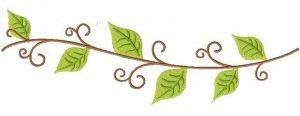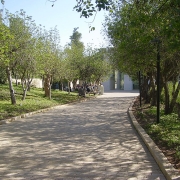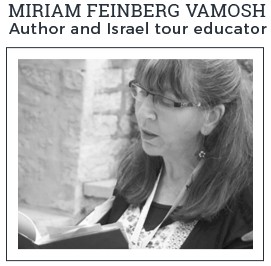Carob Trees, the Bible, and Righteous Gentiles
Carob Trees, the Bible, and Righteous Gentiles
Sweet, nutritious carobs are a blessing in the bone-dry Holy Land summer. What’s more, they embody a message of hope and striving for a higher level of humanity.
Following my recent video blog from “carob land” a few weeks ago, here are my promised further thoughts on the tasty, healthy summer fruit Ceratonia siliqua a.k.a. the carob. Another name for the fruit is St. John’s bread, because it’s said to have nourished the baptizer in the wilderness. Or did it? Read on and find out more.

Carob pods. Aaron Vamosh.
According to 2 Kings 6:25 the besieged and hungry people of Samaria couldn’t even afford to buy “doves dung.” But a different reading of the Hebrew, instead of “doves dung” tells us that “seed pods” – possibly of the carob – were the commodity in question. Arguing against that idea, however, botanists say carobs were too rare in Bible times to have been cited in that context and and carobs only became more common in the Roman era and then in modern times.
Let’s see where else carobs appear in the Bible. A biblical term recalling the carob – according to ancient sages – is in 1 Sam. 2:36, appearing as a “piece of silver.” Medieval scholar Rabbi Abraham Ibn Ezra said that the root of the word agora (translated as “piece” and which came to mean “penny” in modern Hebrew) was in the word gera, which he surmised meant “carob seed.” About 15 of these small, lightweight seeds are found in each 7-8-inch pod. The gera, the carob seed, was quite standard in size and weight and so it apparently morphed into the word “carat,” which is now used to indicate the weight of a diamond.
Carobs might also appear in the New Testament as the “husk,” sometimes translated as “pods” in Luke 15:16. In Greek that word is keration, also reminding us of the word carat.
But why is the carob tree called “St. John’s Bread” when the English New Testament (and the Greek) clearly say he was eating “locusts”? The first question is whether John, who as a Jew would have taken his dietary cues from the Bible, would have eaten locusts? The answer is yes, and, well, even yum, at least according to some Jewish culinary tastes, mainly in the old days – some species of these meaty bugs are kosher according to Deut. 14:20 and Lev. 11:21–22.
The Oxford English Dictionary weighed in on John’s diet too. It says that the carob tree was nicknamed “locust” akris (plural, akrides in Greek) because of the shape of the pods and the way they clustered on the tree, and so John was therefore indeed dining on carobs, not actual locusts, together with his wild honey.

St. John the Baptist , by Hieronymus Bosch, 15th century. Wikimedia Commons.
Later interpreters tried their hand at this linguistic mystery, noting that the writings of the Ebionites, an early Judeo-Christian sect (who were considered heretical and died out) may have influenced later church scholars who also pondered John’s diet. Ascetics and non-meat eaters, Ebionites, some scholars say, couldn’t abide the thought of John eating meat, so they substituted enkrides, honey cakes, for akrides (locusts).
And Why is a Righteous Gentile like a Carob?
Carobs grow throughout Israel these days. But botanists tell us they have only truly proliferated in recent centuries, after the land had become degraded and the forests denuded. That’s where connection between non-Jews who risked their lives to save Jews in the Holocaust – known as Righteous Gentiles – come in:
Yad Vashem, the Holocaust Remembrance Center in Jerusalem, planted a carob tree in memory or in honor of each Righteous Gentile they could find. I’ve never seen an official explanation for the choice, but one day, I think I found out. I was guiding a group of British gardening enthusiasts, visiting formal gardens all over Israel. One of these is the magnificent Rothschild Gardens in Zichron Ya’akov. At one point our guide shared what she said was a horticultural mistake: “We planted carob trees on the lawns. Because we water the lawns regularly, the carobs get too much water and they don’t bear fruit – carobs only bear fruit under stress, where no other fruit will grow.” Right then and there, I connected to the Yad Vashem carobs: They symbolize the people who “bore fruit” in a desert of evil and immorality.

Avenue of the Righteous Gentiles. Wikimedia Commons.
I would like to end with another carob tale meaningful in our desire to lives a life of service. It’s about a sage and miracle worker named Honi, (known as the Circle Maker; remind me to tell you that story another time): Honi was walking on the road and saw a man planting a carob tree. “How long will it take for this tree to bear fruit?” Honi asked the man. The man replied, “Seventy years,” to which Honi replied: “And do you think you will be around to eat its fruit?” The man answered: When I was born, I found carob trees planted by my father and grandfather. Just as they planted for me, I am planting for my children” (Babylonian Talmud, Tractate Ta’anit 23a).
I dedicate this blog to the memory of my sister, Lucy Weil Feinberg (July 29, 1948–July 31, 2018), who loved nature and lived a life of service devoted to protection of all who are weak and at risk. May the memory of her works inspire us all to do the same.

My thanks to Tova Dickstein and Susan Weingarten for sharing their carob knowledge with me.
Want to know more?
Brock, S. 1999. From Ephrem to Romanos: Interactions between Syriac and Greek in Late Antiquity. Variorum Collected Studies Series Brookfield, Vt. Chapter X: .The Baptist’s Diet in Syriac Sources. Pp. 114–124.
Kellhoffer, J.A. 2005. The Diet of John the Baptist: Locusts and Wild Honey in synoptic and patristic tradition Tuebingen 2005.





